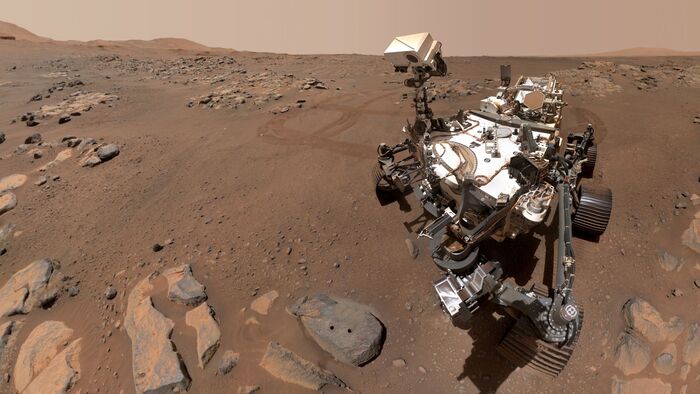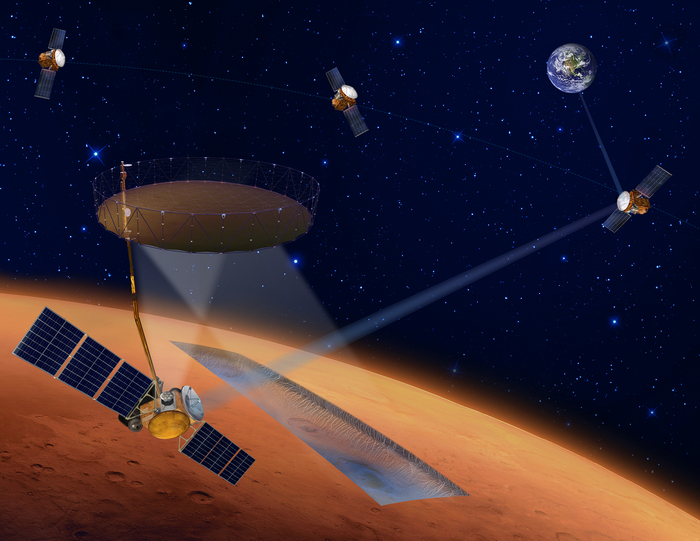"Impossible material" discovered on Mars: explanation after surprising discovery by Nasa rover
Created: 2022-11-02 05:01
By: Tanya Banner
'Impossible' material discovered on Mars
(Archive photo) © JPL-Caltech / MSSS / dpa
A surprising discovery on Mars has been on the minds of researchers for years.
Now they present a solution how the found material can be explained.
Houston – In 2016, NASA's Curiosity rover made an unusual discovery on Mars: the research vehicle discovered the mineral tridymite in a rock sample from Gale Crater.
This is a special form of quartz that is usually associated with siliceous volcanism.
Tridymite is formed when silicates are first strongly heated and then rapidly cooled.
High temperatures and high concentrations of silicic acid are required for its formation.
Although this volcanism exists in some places on earth, no one suspected that it could also exist on Mars, the US space agency Nasa said after the discovery.
After the surprising discovery of the Mars rover "Curiosity", researchers tried to find evidence that tridymite can also form at lower temperatures.
However, they hadn't found any, which is why they suspected that Mars could have a more violent and explosive volcanic history than previously thought.
Mars: These rovers and spacecraft explore the red planet
View photo gallery
NASA rover "Curiosity" finds "impossible" mineral on Mars - researchers find solution
Now a research team from Rice University in Houston has given NASA's Johnson Space Center and the California Institute of Technology an explanation for the "impossible" mineral tridymite on Mars, as fr.de writes: Martian magma has to last longer than usual in a chamber below a volcano, where it partially cooled.
Silicate-rich parts of the magma rose to the top.
During a large volcanic eruption, mainly this silicate-rich material, which also contained tridymite, was spewed out in the form of lava and ash.
The wind then blew the ash up to Gale Crater.
The researchers are certain that it must have contained water at this point.
"Since we saw this material only once and it was highly concentrated in a single layer, we assume that the volcano probably erupted at the same time as the lake formed," explains Kirsten Siebach, co-author of a study on the Topic
published online in the
Earth and Planetary Science Letters .
"While the sample we analyzed was not exclusively volcanic ash, it was ash that had been water-weathered and sorted."
The scenario the researchers describe not only explains the finding of the "impossible" mineral tridymite on Mars, but also other things found in the Mars sample - such as opal silicates and a reduced concentration of alumina.
If the researchers' theory is correct, it would mean that explosive volcanism existed on Mars more than three billion years ago.
Researchers believe that this is when Mars went from being a warm, humid world to the dry, cold planet we know today.
"This work suggests that Mars has a more complex and intriguing volcanic history than we could have imagined before Curiosity."
also read
Abolition of the time change: When does turning the clock end?
Traditional brewery has to file for bankruptcy - operations are completely discontinued
Nasa: Three million years ago there must have been volcanism on Mars
The Curiosity rover has been on Mars for about ten years.
He landed on August 6, 2012 in Gale Crater, a region where years later he discovered the "impossible" mineral tridymite.
"The discovery of tridymite in a mudstone in Gale Crater is one of the most surprising observations that the Curiosity rover has made in its ten years of exploring Mars," emphasizes Siebach.
(Tanya Banner)






